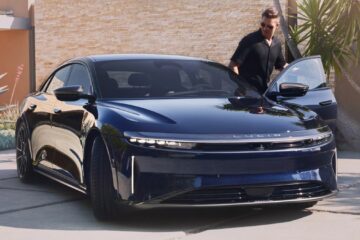On the many Facebook groups devoted to Royal Caribbean you’ll often see price increases and service cutbacks — both real and imagined — attributed to the cruise line “needing to make up the billions of dollars it lost during the Covid shutdown.”
That sounds right but it was never exactly true. Royal Caribbean (RCL) and its rivals did increase their financial discipline after the pandemic, but they focused on giving people what they wanted most while taking away things they wouldn’t miss much.
Related: Here’s what’s happening at Royal Caribbean’s Labadee, Haiti port
Both Royal Caribbean and Carnival, (CCL) for example, cut back steward service to nonsuite cabins to once a day from twice a day. That led to some grumbling, but your room steward remained available for any needs outside the single service, such as bringing more towels, ice or anything else you needed.
So while it seemed like a cut, most passengers did not really need to that service twice a day, so it wasn’t a real sacrifice.
And while it made that change, Royal Caribbean also made subtle additions like offering snacks at night at Park Cafe on Oasis- and Icon-Class ships when that venue used to close at 6 p.m.
Another addition: improving the bar menu in the Schooner Bar and its British pub. The cruise line also added nonsmoking casinos to its Oasis-Class ships and new slot machines on most of the ships across the fleet.
Royal Caribbean has done an excellent job managing its costs, raising prices based on demand, and it has now reached a major goal. The achievement should lead passengers (if they know about it) to retire the “making up Covid losses” argument.
Sign up for the Come Cruise With Me newsletter to save money on your next (or your first) cruise.
CEO Jason Liberty has led a major financial comeback for Royal Caribbean.
Image source: Royal Caribbean
Royal Caribbean fixed a big problem
Investors know that Royal Caribbean has reached its trifecta goals.
“The Trifecta Program is a three-year financial performance initiative designed to chart out the pathway back to superior performance with three main goals to be achieved by the end of 2025:
Triple Digit Adjusted Ebitda per Available Passenger Cruise Days to exceed prior record adjusted Ebitda per APCD of $87 in 2019.Double Digit adjusted earnings per share to exceed the prior record adjusted earnings per share of $9.54 in 2019.Return on invested capital in the teens, to exceed the prior record ROIC of 10.5% in 2019 by optimizing capital allocation and enhancing operating income. All this while returning to an investment-grade profile and reducing carbon intensity by double digits compared to 2019.”
“To achieve these goals, the company expects to execute its proven formula of moderate capacity growth, moderate yield growth, and strong cost controls, all while ensuring disciplined capital allocation, investing in the future, and improving the balance sheet,” the company said in a news release.
That’s a lot of financial lingo that might not mean much for passengers, but to translate, it means Royal Caribbean has completed its post-Covid financial comeback. Chief Financial Officer Naftali Holtz discussed the effort during the cruise line’s third-quarter-earnings call.
Royal Caribbean has a new asset
While it has added ships to its fleet, those may not be the most important asset the company has brought in. Holtz explained in response to a question:
“It was a very important pillar of Trifecta to make sure that we bring the balance sheet back to being an asset,” he said. “So we obviously crossed a very key milestone this quarter with getting it back to unsecured status. No guarantees, all the guarantees and security that we have granted to everybody during the pandemic to get through are done now,” he shared.
ALSO READ: Top travel agents share how to get the best price on your cruise
This massive milestone gives the cruise line much more financial flexibility to do things like return capital to shareholders. Holtz said that despite all that has been accomplished, the work is not done.
“We will continue to make sure that we have a very strong balance sheet,” he said. “And while a lot of the higher-cost debt is gone, we always continue to find ways to lower the cost of capital, and that will be the focus to make sure that we generate even more cash flow for the company.
“And as we think about capital allocation, obviously we need to maintain a strong balance sheet. We have a great opportunity to invest as we see a large opportunity in an almost $2 trillion market to continue to win share,” he added.
Are you taking a cruise or thinking about taking one? Visit our Come Cruise With Me website to have all your questions answered.


